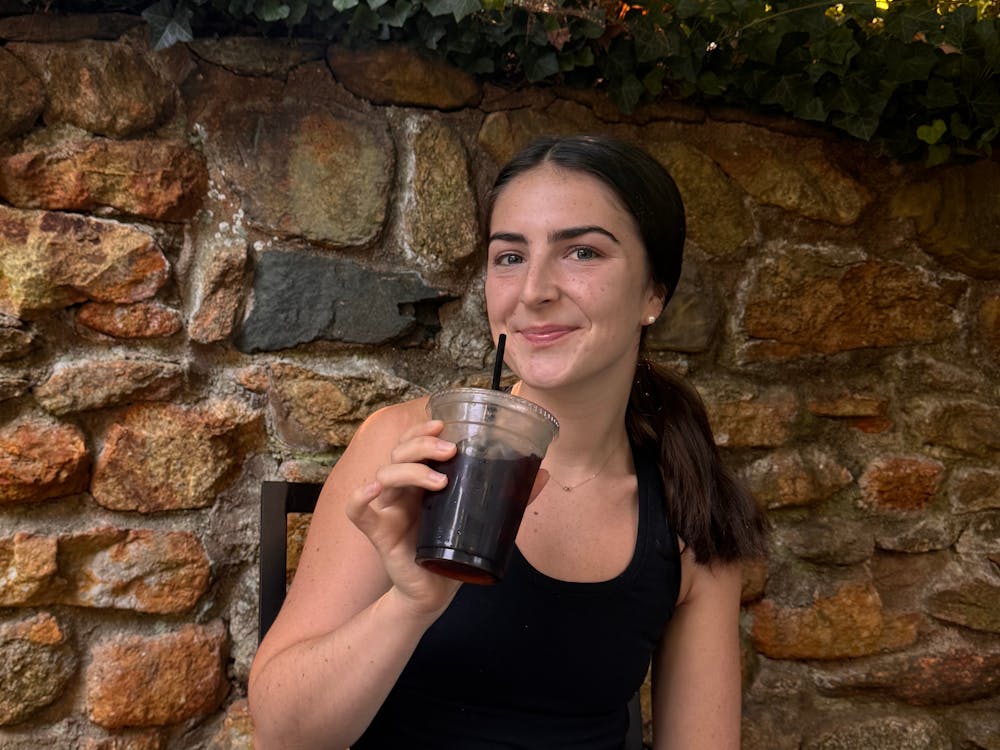Participating in activities on Mr. Jefferson's fabled Lawn is just another of the many special opportunities that make up the University experience. Two weeks ago, several students seized this opportunity, but with a little twist. Anybody who passed by the south end of the Lawn the night of Oct. 13, a Wednesday, witnessed an inspiring sight -- October Camp, an overnight rally for diversity. October Camp was one instance of student activism, a phenomenon that is by no means new to the University.
Since this institution's inception, the student body has continually vocalized its opinion. Never was such public expression stronger than in May of 1970.
On May 4, following the U.S. decision to invade Cambodia and the tragic shooting of student demonstrators at Kent State University, University students confronted President Edgar Shannon, demanding the removal of the ROTC from Maury Hall. In addition, the students presented Shannon with a petition that they were planning to send to President Nixon. Although Shannon said he agreed with the students' ideals, he initially refused to sign the document.
Tensions had been developing on Grounds even before the Kent State incident sparked public outcry. Several weeks before, members of some extremist student groups had invited Jerry Rubin, a member of the Chicago Eight who disrupted the 1968 Democratic National Convention, and William Kuntsler, the lawyer who defended him, to come and speak on Grounds.
On May 6, The Cavalier Daily reported students packed University Hall and listened as Kunstler preached that, "Power to the people only means something if you seize power when you can." Rubin in turn urged the audience to "shut the University down." Following the speeches, nearly 2,000 students, some bearing Viet Cong flags, marched to Carr's Hill.
While the angry mob chanted outside his house, President Shannon remained inside with select faculty and student leaders, including James Roebuck, the first African-American Student Council president. Soon, focus shifted away from Shannon and demonstrators decided to march to Maury Hall.
Taking almost 10 minutes to clear the intersection north of the Rotunda, nearly 1,500 students marched to Maury Hall, attempting to seize the building. A small fire that broke out in a mattress in the basement and rumors of an oncoming police force finally caused the protesters to disperse. Many students believed the administration had intentionally started the fire, although no one knew for sure.
About 350 students formed a Strike Committee and urged students to boycott their classes. Student Council unanimously supported to resolution, as did 29 of the 33 fraternities on Grounds. Over 150 faculty members voiced their support of the student strike; several did not hold classes May 6, although the University officially remained open. Those students who chose to take part in the strike gathered to rally on the North portico of the Rotunda; The Cavalier Daily reported an estimated attendance of 3,000 individuals.
On May 7, according to The Daily Progress, a small scuffle ensued as "students on Emmet St. encouraging motorists to honk their horns for peace began insisting the horns be honked."
The next day, as 224 colleges around the nation closed, students from the University as well as several other Virginia schools blocked traffic on University Avenue. That night, 68 students were arrested, some while inside their Lawn rooms. This "did more than anything else to radicalize student opinion," Roebuck said to The Cavalier Daily.
On May 10 at 2 p.m., Shannon addressed 4,000 students gathered on the Lawn. "The University of Virginia is the only major university on the East Coast that is really open. I intend to keep it open," he said. Initially, the crowd jeered at his comments. But soon, opinion shifted. Shannon urged faculty members to give extensions to those taking part in the strike, so students could "concentrate on constructive action in the re-direction of the nation's war policy."
In an official statement, Shannon informed the senators from Virginia that the University community was "gravely concerned by many evidences of anti-intellectualism and growing militarism in the national government of the U.S." This statement, alongside a petition, was placed at Pavilion VIII for students to sign.
The Richmond Times-Dispatch criticized President Shannon as "a man who is prepared to back down," and alumni wrote countless letters of complaint to his office. Still, Shannon maintained his support of student activism. When he took the podium at Graduation exercises in June, he received a standing ovation from the fourth-year class.
Together, the faculty and the students maintained open communication during a heated and dangerous time. While premiere institutions like Princeton University cancelled classes for the remainder of the year, the University continued to function.
Adam Reno is a second-year College student and University Guide Historian.






